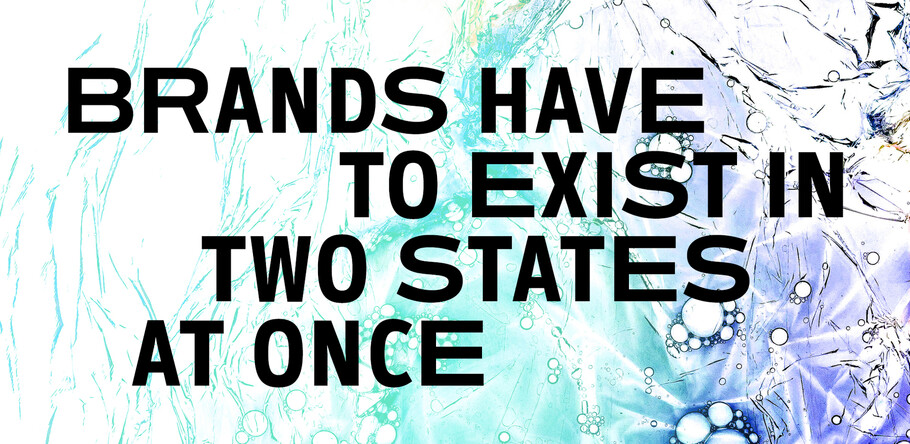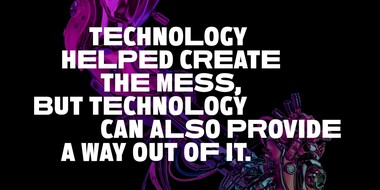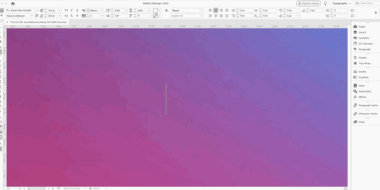How to keep your brand aligned along an ever-evolving customer journey.

Modern brands are not static, stationary objects. Today’s brands need to be agile and adaptable, permanently poised to respond to shifts in consumer expectations, emerging technology, and opportunities in other regions and languages.
In a sense, brands have to exist in two states at once—simultaneously solid and malleable, able to stretch their shape without altering their underlying structure. Perhaps the closest corollary in the natural world is water, which can flow, freeze, or evaporate, find cracks within mountains and fill entire oceans, but nevertheless remains fundamentally itself.
For brand managers, the goal is a flexible brand that enables individuals and teams to experiment and adapt, built on a strong underlying structure that prevents the brand from falling apart.
The incredible, expanding brand.
According to Adobe, 71% of companies report creating 10 times the number of assets today than they did just a few years ago. This remarkable statistic drives home perhaps the single most important aspect of branding today: The customer journey is no longer comprised of just a few paths.
Instead, today’s customer journey is an increasingly fragmented network of divergent streams. Each customer’s journey has unique and sometimes subtle differences, even if they all begin and end in similar places, like a mobile device. But there are countless mobile devices in circulation across the globe, with a wide range of technical capabilities and an even broader range of humans using them. No two journeys are identical.
“Customers are in more places than ever, from geography to the device or surface they’re using,” says Monotype Creative Director James Fooks-Bale. “And by the time you think you have things set, a new device, platform, or form of content creation has been added to the pile.”
This is not just the state of play today. Going forward, brands can expect a continued trend of innovation, expansion, and shifts in consumer preference that will further diversify the number and variety of touchpoints a brand has to manage. Perhaps the pace of that trend will slow down in the future, but emerging technology in the fields of automation, personalization (and hyperpersonalization), plus new platforms and constantly improving devices, suggest any deceleration is a long way off.
Fonts are the unbreakable bond
A flexible brand still needs something to hold it together, that keeps customers anchored as the brand ebbs and flows. That “something,” is a brand’s font system.
In its most robust expression, a brand is comprised of any number of elements, including (but certainly not limited to) color, shape, imagery, video, animation, sound, and fonts.
But if the mobile-first era has proven anything, it’s that sometimes brands need to get by with less. Digital properties need to be simplified for mobile devices, with a focus on clarity and usability that doesn’t disconnect from the brand identity. Unlike some branding elements, fonts are an indispensable component in both the maximalist and minimalist expressions of a brand, as well as all points between.
“We’ve already seen a huge acceleration of mobile as the medium for an accessible brand,” says Fooks-Bale. “If it doesn’t work on mobile, it doesn’t work, period. There can be no compromise when it comes to the look, feel, or content strategy of the mobile experience. Fonts will continue to play a critical role in these mediums where real estate is at a premium and the lowest common denominator comes into the foreground.”
James Fooks-Bale, Monotype Creative Director.
A distinctive, thoughtfully constructed font system can carry a brand’s voice without support from the full suite of branding elements. Using the correct brand font is the simplest way to ensure continuity across touchpoints. On a black and white invoice, for example, simply setting the text in a brand’s font draws an instant connection to the broader brand identity. The same principle applies to a mobile site where a brand’s identity is stripped down to the basics.
Often, all a brand is left to work with is fonts, so those fonts better be ready to do some work.
Everyone’s a brand manager.
As brands expand, so does the number of people with a role in maintaining it. And that group isn’t comprised solely of branding, marketing, and creative roles—it includes virtually anyone.
An organization’s ecosystem of branding touchpoints goes well beyond what the public sees: Sales presentations, emails, invoices, receipts, contract templates, internal communications … the list goes on. Who manages these touchpoints? Who is there to make sure the brand is conveyed as intended? Do they have access to the right brand assets, and know when, where, and how to deploy them?
“Do the people looking after your brand understand they’re contributing to or detracting from the brand?” says Fooks-Bale. “Our aim is to train and trust the relevant teams, rather than prescribe too much or be in a position where we have to approve everything.”
A lot of branding happens that the brand, marketing, or creative teams never see and realistically can’t actively manage. Instead, modern brands accept a few fundamental truths:
-
Everyone at an organization is a brand manager.
-
Therefore, everyone should be invested in your brand and empowered to share it.
-
This means the branding may not always be perfectly consistent. A well-constructed brand makes space for and even embraces this human element with a framework that can flex.
Asset management solutions like our own Monotype Fonts eliminate a lot of the risk that comes with this reality. Monotype Fonts allows creatives to choose and use the fonts that are best for their projects, but also empowers companies to organize their fonts in a single, central location with clear labels, customizable groupings, and the ability to determine which team members can access which fonts.
If everyone in an organization logs into the same system to access brand assets, and the assets in that system are clearly labeled, it becomes difficult for someone to use the “wrong” asset. And even if that happens, the “wrong” asset is probably still relatively on brand—and a far more preferable alternative to finding a rogue font or color in a customer email.
A system like this also helps the creative and marketing teams work efficiently. These are the people that work with the brand the most, and as a result they spend the most time searching for assets. A recent study showed that 48 percent of creatives spend eight hours or more per-week on non-creative tasks—searching for typefaces, digging through files, reading through font licenses, checking for missing glyphs, and so on. This is neither sustainable nor productive, and is seriously out of step with today’s expectations, where quick responses and timely campaigns win the day.
Brand managers can’t look over everyone’s shoulder all the time and would (probably) prefer not to. But a flexible approach to your brand, centered on a thoughtful font strategy, can provide peace of mind for everyone at your organization.
To learn more about Monotype Fonts can help take the guesswork out of font licensing, drop us a line and we’ll get in touch.


